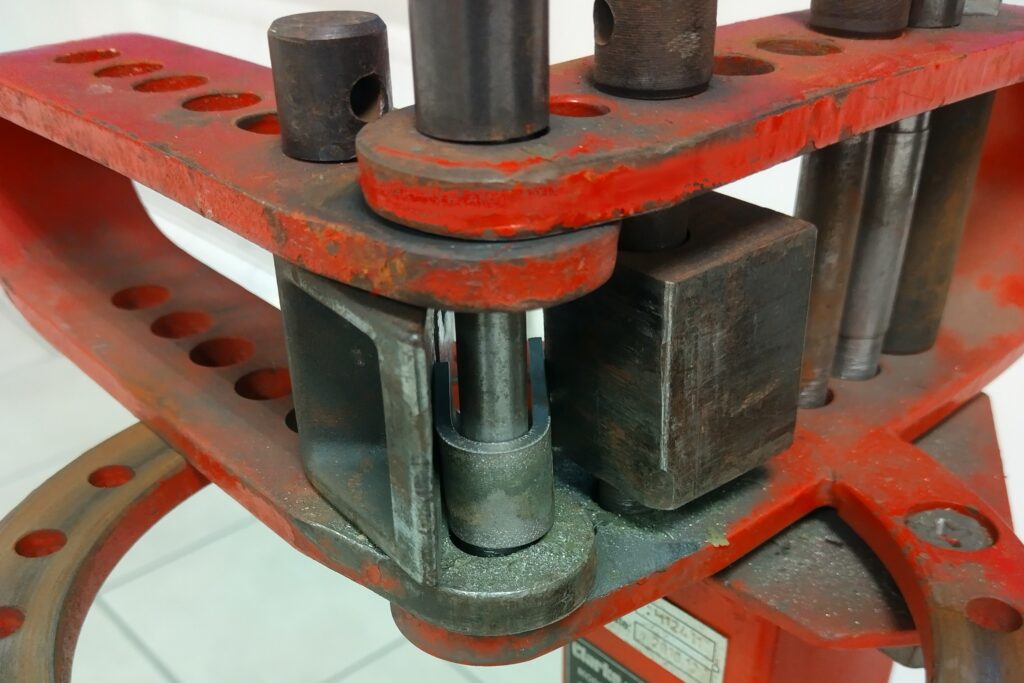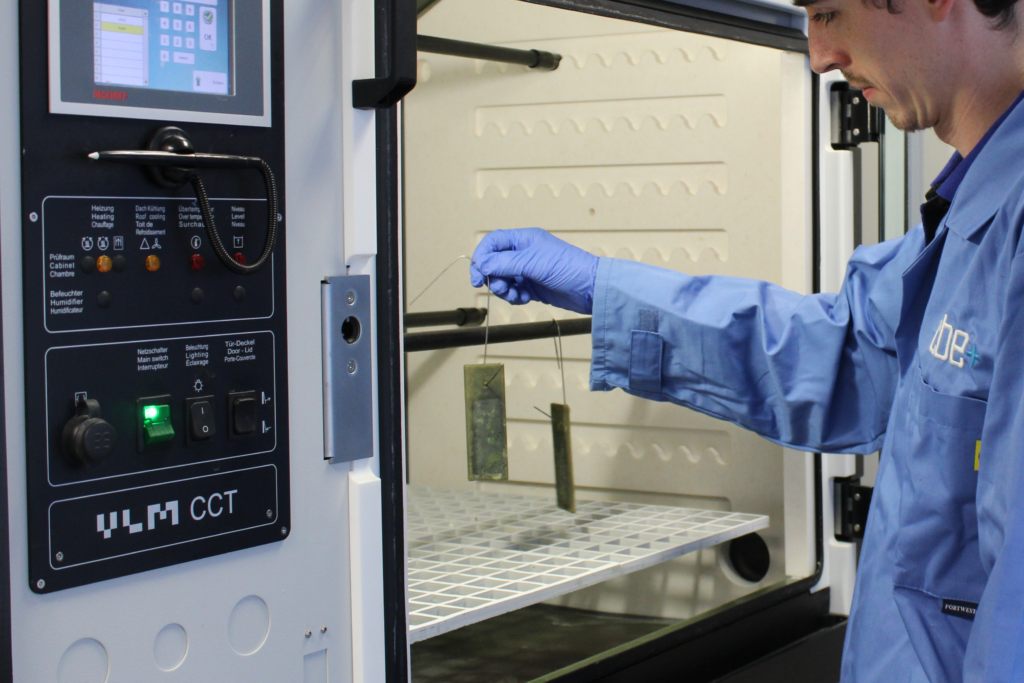TESTING
ADHESION TEST

DETAILS
The adhesion of a coating to its substrate is essential to the long-term performance of the coating itself. CBE+ laboratories perform bend tests in accordance with ASTM B571. This includes the part being bent over a mandrel and the deformed area being examined under a low magnification (4X) for peeling or flaking of the coating from the substrate.
MICROSECTION

DETAILS
We specialise in the process of micro-section testing.
To carry out a micro-section test, a shim of identical material is plated alongside a customer’s component, using the same method. The plated shim is then cut up using a diamond bladed cutting tool to minimise vibration and assure accuracy.
The resulting sample is then set in clear resin, and polished to a fine finish. The surface of the sample is then etched in an appropriate chemical solution to allow the nickel or diffusion layer to be examined under the microscope.
A UKAS-calibrated slide is then used to accurately calibrate software used to measure these layers, determining the thickness of the cross-section under an optical microscope allowing CBE+ to certify the specification of customers is met and met.
The specification for micro-section testing is BS EN ISO1463 & ASTM B487.
MICROHARDNESS

DETAILS
We measure the hardness of metal by using the Vickers hardness test, which provides accurate and reliable results.
A square base, pyramid-shaped diamond is used for testing, and loads are typically very light. Microhardness methods are suitable for testing metals, ceramics, composites, and almost any other type of material. Hardness is defined as the resistance to indentation and determined by measuring the permanent depth of the indentation. As a rule, the smaller the indentation left in the metal, the harder the metal.
To provide accurate results, we ensure that the surface of the specimen is smooth in order to permit a regular indentation shape and good measurement, and the test sample is always held perpendicular to the indenter.
The samples prepared at CBE+ Laboratories are mounted into a plastic medium which enables us to facilitate effective preparation and accurate testing. We also ensure that the indentations made are as large as possible to maximise the resolution of the measurement.
The specification for hardness testing is ASTM E384.
SALT SPRAY

DETAILS
The salt spray test is widely used in the industrial sector. Salt spray testing (salt fog testing) effectively assesses the reliability of a product by simulating extreme environments, therefore confirming that an industrial coating will survive in its working environment. The salt spray test is used to check the corrosion resistance of coated samples, substrates, and components which may be prone to suffering from degradation because of salt corrosion.
The test is conducted in a closed salt spray chamber where the sample is subjected to extended exposure to a saline, or salted, spray. The length of exposure time is determined by the material, the coating, and the standard specified.
The salt spray test can be adapted to different levels of corrosion to simulate different environments. As a rule, the more resistant the coating is, the longer the period in testing without showing signs of corrosion. Our expert team are then able to evaluate the part for evidence of corrosion, enabling us to determine the resistance of the sample, ensuring its longevity and reliability.
The specification for salt spray testing is ASTM B117.
MOIST SULPHUR DIOXIDE

DETAILS
We provide specialist Kesternich testing (sulphur dioxide testing) services for a range of metals and metal plated components. Resistance to corrosion is measured in Kesternich cycling.
Acid rain and acidic industrial pollutants are corrosive and can degrade coatings and plated surfaces. Kesternich testing simulates these environments to evaluate the corrosion resistance of the coating substrate or part itself.
Parts or panels are placed inside a specially designed chamber and are exposed to SO2. The chamber in use at CBE+ Laboratories meets the highest safety standards and allows us to create the perfect conditions to carry out accurate and controlled Kesternich testing. The dosing of the SO2 gas is controlled during the test to accurately simulate exposure to chemicals that may be met in natural environments. An evaluation is then carried out to determine the level of corrosion resistance.
Our Kesternich testing services are available to customers worldwide.
